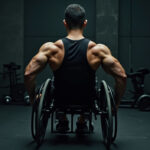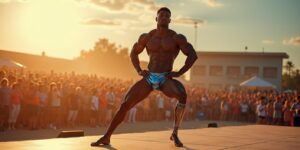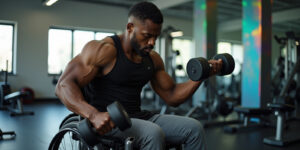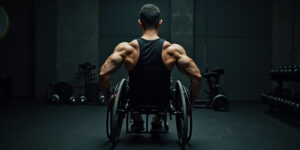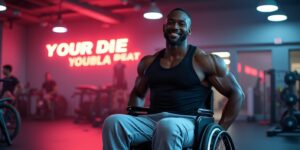Wheelchair bodybuilding is more than just a sport; it is a movement that empowers individuals with disabilities to push their physical limits and redefine what is possible. This inspiring field showcases the strength, resilience, and determination of athletes who refuse to let mobility challenges define their abilities. Over the years, wheelchair bodybuilding has gained significant recognition, with dedicated competitions, passionate athletes, and increasing support from fitness communities worldwide.
The Evolution of Wheelchair Bodybuilding
The concept of wheelchair bodybuilding has been around for decades, but it started gaining mainstream attention in the 1990s. The International Federation of Bodybuilding & Fitness (IFBB) and the National Physique Committee (NPC) have played crucial roles in promoting the sport. Today, competitions like the Arnold Classic and the Mr. Olympia Wheelchair Division provide platforms for athletes to showcase their hard-earned physiques and inspire others.
Athletes in wheelchair bodybuilding follow rigorous training routines, focusing on upper-body strength, muscle symmetry, and conditioning. Just like traditional bodybuilding, this sport requires strict discipline, nutrition planning, and mental toughness.
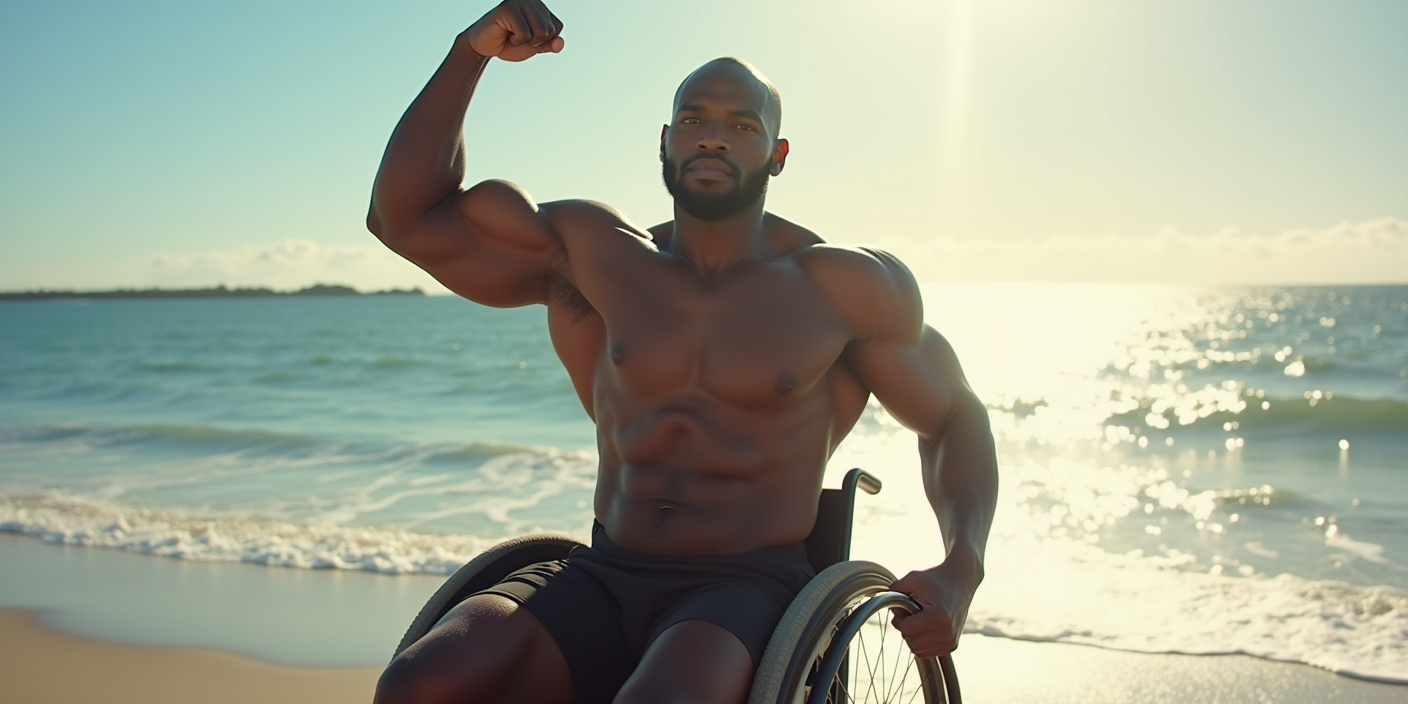
Training for Wheelchair Bodybuilding
Training in wheelchair bodybuilding revolves around building upper-body strength and muscle mass. Since lower-body movements are limited, athletes focus on exercises that enhance their chest, shoulders, back, and arms. Common exercises include:
- Bench Press: A staple for developing chest and triceps strength.
- Seated Shoulder Press: Essential for building strong, well-defined shoulders.
- Lat Pulldowns: Helps in developing a V-shaped back.
- Biceps and Triceps Workouts: Using dumbbells or resistance bands for arm definition.
- Core Strengthening Exercises: Essential for stability and overall balance.
These exercises, combined with consistency and progressive overload, help wheelchair bodybuilding athletes achieve impressive physiques that rival those in traditional bodybuilding categories.
Nutrition and Diet for Wheelchair Bodybuilding
Proper nutrition is a critical component of wheelchair bodybuilding. Athletes follow specialized diets to support muscle growth, fat loss, and overall health. A well-balanced diet includes:
- Lean Proteins: Chicken, fish, eggs, and plant-based sources for muscle repair and growth.
- Healthy Fats: Nuts, avocados, and olive oil for energy and hormone regulation.
- Complex Carbohydrates: Brown rice, quinoa, and sweet potatoes to fuel intense workouts.
- Hydration: Drinking plenty of water to maintain performance and recovery.
Supplementation, including protein powders, BCAAs, and pre-workouts, also plays a role in maximizing results in wheelchair bodybuilding.
The Mental Strength Behind Wheelchair Bodybuilding
While physical training is crucial, mental toughness is equally important in wheelchair bodybuilding. Many athletes in this field have faced life-changing injuries or conditions, yet they continue to push forward, overcoming both physical and psychological barriers.
Motivation, resilience, and a strong support system help these athletes stay focused on their goals. Many wheelchair bodybuilding competitors become motivational speakers and mentors, encouraging others with disabilities to embrace fitness and lead active lives.
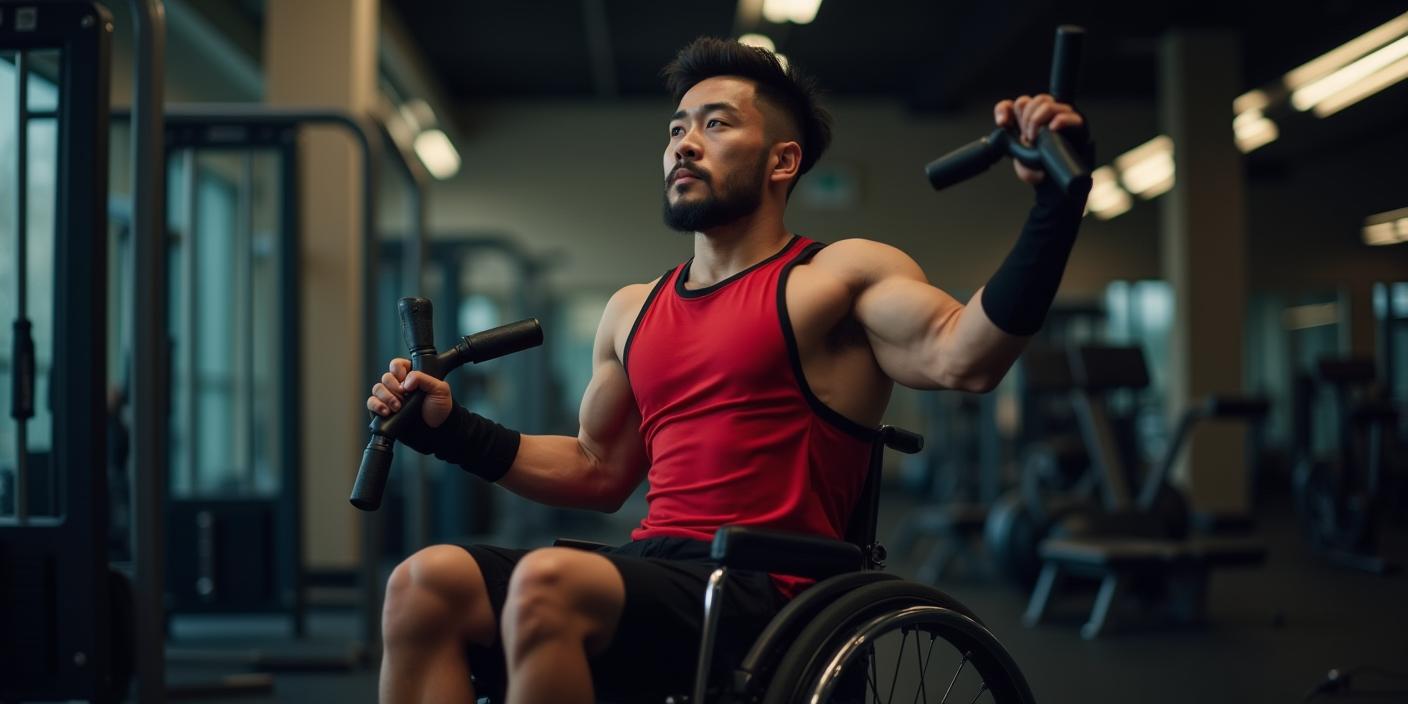
Notable Athletes in Wheelchair Bodybuilding
Several remarkable athletes have made significant contributions to the sport, inspiring millions worldwide:
- Harold Kelley: A multi-time Mr. Olympia Wheelchair champion, known for his incredible physique and dedication to the sport.
- Gabriele Andriulli: An Italian bodybuilder who has made waves in international competitions.
- Nick Scott: A pioneer in wheelchair bodybuilding, who has played a key role in promoting and expanding the sport.
These athletes demonstrate that wheelchair bodybuilding is not just about competing—it is about proving that strength comes from within.
Competitions and Recognition
Wheelchair bodybuilding has gained prominence with dedicated divisions in major bodybuilding events. Some key competitions include:
- Arnold Classic Wheelchair Division: One of the most prestigious events featuring top wheelchair athletes.
- Mr. Olympia Wheelchair Division: The ultimate platform for elite wheelchair bodybuilders.
- NPC Wheelchair Nationals: A major national-level competition fostering new talent in the sport.
With increasing recognition and sponsorships, wheelchair bodybuilding continues to grow, inspiring new athletes to join the movement.
Challenges and Overcoming Barriers
Despite its growth, wheelchair bodybuilding faces challenges such as limited accessibility to gyms, lack of awareness, and financial constraints for specialized equipment and coaching. However, organizations and fitness brands are stepping up to provide better opportunities, adaptive equipment, and support for athletes.
With social media and digital platforms, wheelchair bodybuilding athletes now have a global stage to share their journeys, motivate others, and advocate for inclusivity in the fitness industry.
The Future of Wheelchair Bodybuilding
Wheelchair bodybuilding is a testament to the power of human resilience. It proves that limitations are often just mental barriers that can be overcome with dedication and hard work. As the sport continues to grow, more individuals are discovering its benefits—not just in terms of physique but also in confidence, mental strength, and overall well-being.
Whether you are an aspiring athlete or someone looking for motivation, wheelchair bodybuilding offers valuable lessons about perseverance, self-discipline, and the power of believing in oneself. The future of wheelchair bodybuilding is bright, and it will continue to inspire countless individuals to push beyond their limits and achieve greatness.

